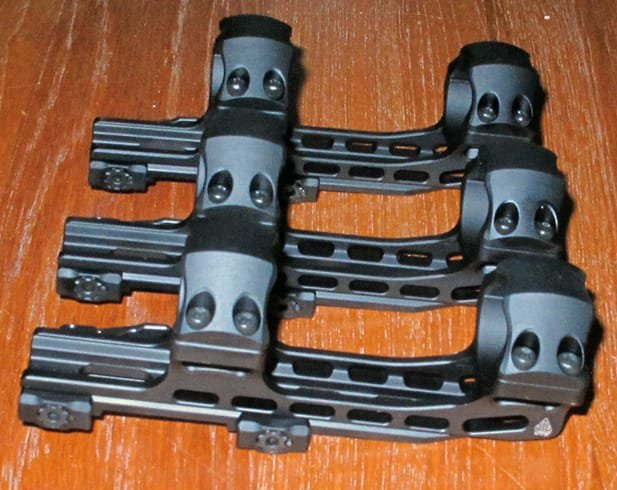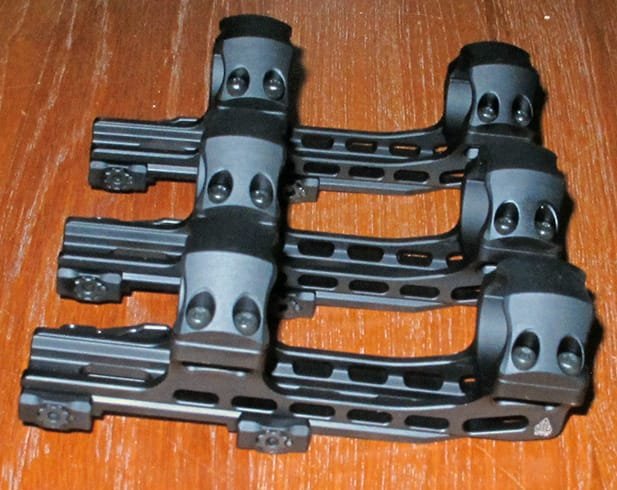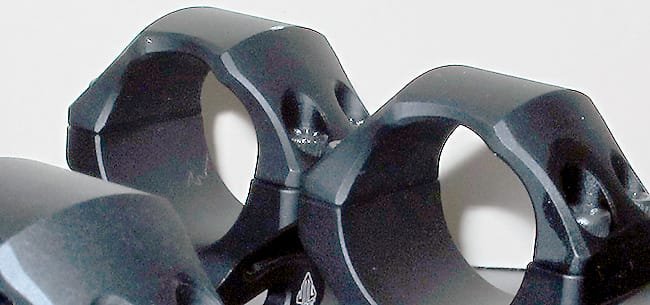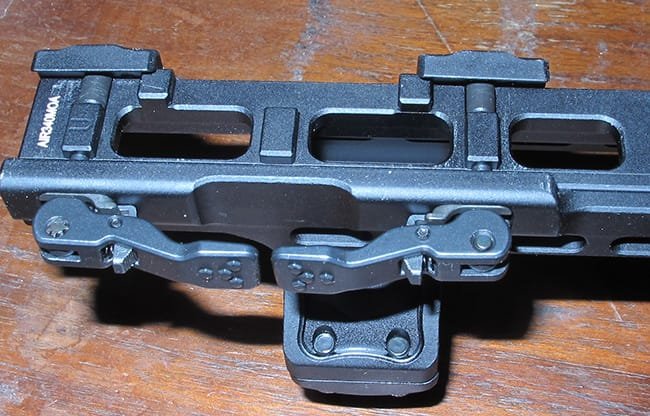Testing the three new UTG drooper scope rings: Part One


Three UTG drooper scope mounts—20 in front, then 30 MOA and 40 MOA.
This report covers:
- Drooping barrel?
- Problem firearm
- The UTG solution
- Hard to see
- How should I test?
- Description
- Final word
Today we begin examining and testing the three new UTG drooper scope ring sets from Leapers. These are the mounts I showed you in the 2025 SHOT Show report. These 30mm rings come with 20, 30 and 40 minute-of-angle/MOA droop angles and should correct most of your drooping barrel issues.
Drooping barrel?
The barrels on most air rifles and firearm rifles point downward for one reason or another. They don’t actually droop. But if a scope is mounted on the receiver of the rifle and “looks” straight ahead while the barrel points downward slightly, you often end up with a scope whose reticle cannot be adjusted high enough to get on target.
Shooters usually adjust their scope’s elevation up to compensate for low shots. Go too high and the tension on the erector tube spring relaxes, allowing the tube to “float” or bounce around when jarred and of course the erector tube contains the reticle. The result is a scope that will not maintain a zero. Many shooters blame the scope, when in fact it is the scope mounts that are the problem.
Problem firearm
The AR-15 is the most common firearm platform with this issue, which is unfortunate because it is a very popular platform. As a result, there are many AR-15s with scopes that will not hold their zero.
The solution is to mount the scope on a downward angle to align more closely with the downward angle of the barrel. That’s where mounts like these come in.
The UTG solution
When I saw these three drooper scope mounts in the Leapers booth this year I was amazed. I knew UTG had a product airgunners needed to find out about. Right after I was there airgun hunter Jim Chapman saw them and ordered a set right away.
Airgun pellets drop rapidly in flight, so airgunners are already fighting a problem of the pellet impacting too low—just because of gravity. Add the drooping barrel to that and we have a much greater need to compensate for the “shooting too low” problem.
The bullet from a 5.56mm rifle cartridge may drop a couple inches in its first hundred-yard flight. A .22-caliber pellet leaving the muzzle at 850 f.p.s. will drop several feet. The three UTG mounts are machined to compensate for the drop from trajectory as well as barrel droop.
Hard to see
Most shooters understand their bullets drop. But barrel droop is hard to understand.
I recently worked this problem with a friend who wanted to sight-in his new deer rifle. It was shooting too low and he couldn’t adjust the scope crosshairs high enough to get on target at 100 yards. He was shooting a .270 Winchester cartridge in a bolt-action rifle. I talked him through the scope shimming process and the problem was solved. But shimming can bind the scope tube—especially if it is too much.
I’ve told you that these 30mm UTG mounts come in 20 MOA, 30 MOA and 40 MOA corrections. Let’s look at how much of this you can actually see.

Here is a 20 MOA and a 40 MOA scope mount, side-by-side. Which one droops the most?

In this closeup you can barely see the difference in height of the front rings. The front ring of the 40 MOA mount on the right is ever-so-slightly lower than the front ring of the 20 MOA mount in the left. That’s because the scope line through the rings is angled downward just slightly more.
How should I test?
I want to test these three scope mounts to show you what a difference they make. But that won’t be easy because a scope has to be mounted in them. I will use the same scope in all three mounts and the mounts will be on the same airgun, but extremely minor manufacturing differences in each mount will also affect where the scope “looks.”
What I’m saying is that shots with two different 20 MOA scope mounts will probably impact in slightly different places on the target.
If everything was perfect we would see pellet impacts at one place for the 20 MOA mount, slightly lower for the 30 MOA mount and an equal distance lower for the 40 MOA mount. And the separation amounts of the three groups would increase as the distance to the target increased.
I want to do the test to show this separation, but I may not have the best solution. Please give me your thoughts on how you think this test should go.
Description
These mounts are one-piece, which is the only way they can be made. Their bases have crossbars for Picatinny rails and if you adapt them to 11mm dovetails, the middle crossbar won’t have an adaptor.

There is no clamp for the middle crossbar.
Final word
You seldom need to adjust a scope reticle down. The correct one of these three mounts will give your pellet rifle all the vertical adjustment you need for shots to 100 yards and a bit farther. And if your rifle is a severe drooper one of these should fix it.
Which mount is for you? I am of the opinion that more is better in this situation. If I noticed that my pellet rifle shot too low I would go with the 40 MOA mount. Maybe we will see in the testing that isn’t right but until we do, that’s my choice.
The post Testing the three new UTG drooper scope rings: Part One first appeared on Pyramyd AIR.


Leave a Reply
You must be logged in to post a comment.